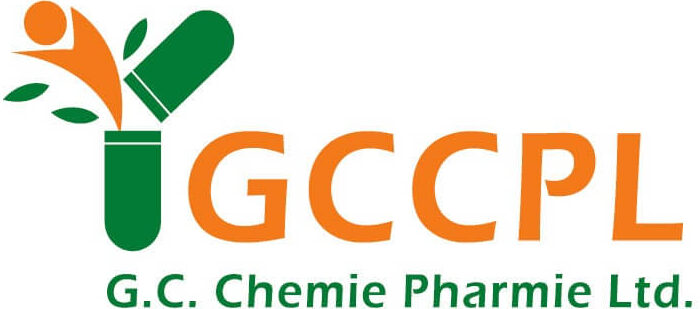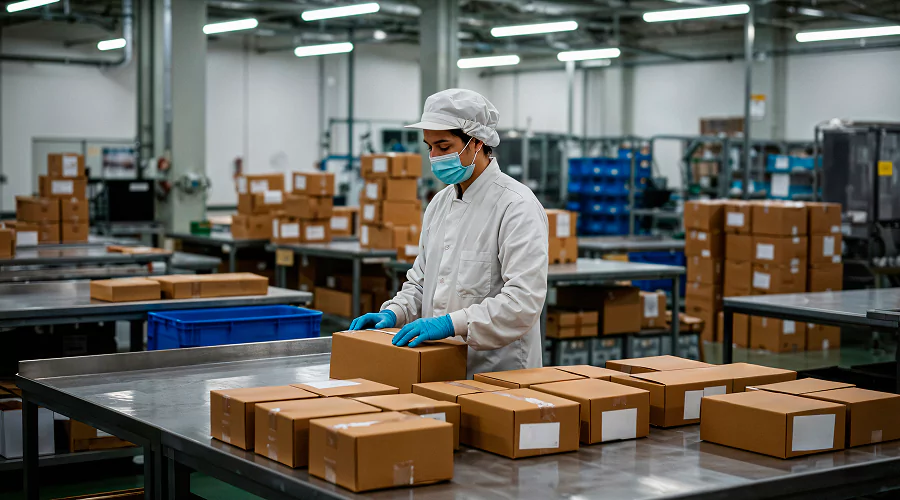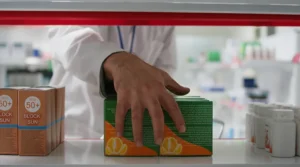Delivering safe and effective medicines to patients is at the very heart of modern healthcare, and none of this would be possible without a robust and well-managed pharmaceutical supply chain. With new medicines continually emerging and patient demand rising, the stakes for reliable pharma logistics have never been higher. An end-to-end (E2E) pharmaceutical supply chain goes far beyond simply “shipping and receiving.” It involves a tightly connected process, from sourcing raw materials and manufacturing to storage, transport, and finally reaching hospitals, clinics, and pharmacies.
In this article, we’ll explore why warehousing and distribution are now considered mission-critical elements of pharma supply chains, look at the innovations shaping the industry, and offer guidance on optimizing operations for safety, flexibility, and growth.
What Is an End-to-End Pharmaceutical Supply Chain?
The pharma supply plays one of the most important roles in getting the medicine safely to the patients. It’s a series of careful steps, all must be taken in due time and in order to make sure that the meds are delivered in their ideal condition to the awaiting patient. The key stages include:
- Raw Material Procurement: The first step is to secure high-quality Active Pharmaceutical Ingredients (APIs) and excipients, which are essential for manufacturing every batch of medicine.
- Manufacturing & Packaging: Once ingredients are sourced, the second stage is that they’re transformed into finished drugs under strict regulatory oversight. Packaging is designed to keep products sterile, tamper-proof, and traceable.
- Warehousing & Storage: Medicines are stored in specialized pharmaceutical warehouses, often equipped with temperature-controlled areas, that preserve their stability and effectiveness.
- Pharmaceutical Distribution: Finally, the products are delivered to wholesalers, pharmacies, hospitals, or directly to patients via multiple distribution networks.
This integrated supply chain approach ensures that setbacks at one stage don’t delay the entire process, minimizes product losses, and ultimately improves healthcare access for patients everywhere.
The Critical Role of Warehousing in Pharma Supply Chains
Proper warehousing is about more than storing boxes on shelves. In pharma, warehouse management means creating tightly controlled environments that keep medicines safe from contamination, theft, and extreme temperatures. Let’s break down what makes pharmaceutical warehousing unique (ref):
Types of Pharmaceutical Warehouses
- Ambient Warehouses: Maintain consistent & regulated room temperature for tablets, capsules, and liquids that don’t require refrigeration.
- Cold Chain Facilities: Essential for vaccines, biologics, and heat-sensitive medicines. These use advanced cooling systems to keep products within narrow temperature ranges, often between 2°C and 8°C.
- Hazardous Goods Warehouses: Designed for safe storage of chemicals or high-risk substances used in pharmaceutical manufacturing.
Key Functions of Pharma Warehousing
- Inventory Control & Traceability: Every product is tracked and recorded, often using barcodes or RFID tags, to ensure total transparency and prevent mix-ups or theft.
- Careful Handling & Packaging: Medicines are handled with extra attention to prevent breakage, contamination, or spoilage.
- Real-Time Data Tracking: Integrated software tracks product conditions and stock movement, enabling rapid response if issues arise.
Compliance and Certification
Some of the strictest regulations are applied to pharmaceutical warehouses in the logistics industry. They need to be certified according to WHO-GDP (Good Distribution Practice) guidelines, ISO standards, and local regulatory bodies. This requires companies to:
- Maintaining up-to-date licenses and permits
- Employing well-trained staff
- Conducting regular audits and quality checks
Robust compliance ensures that patients can trust the medicines they receive, regardless of where they’re made or stored.
Pharmaceutical Distribution: From Plant to Patient
Distribution is the point of convergence for the whole process. This is the step where everything comes together or falls apart in the supply chain. It will decide whether the life-saving meds will arrive on time and in their ideal, most effective condition or not. These are some models of pharmaceutical distribution that companies usually follow:
Common Distribution Models
- Direct-to-Pharmacy: Manufacturers ship medicines directly to retail pharmacies or hospital dispensaries, reducing transit time and risk.
- Wholesaler/Distributor Model: Medicines go to regional hubs, then move on to retail outlets, a model that allows bulk shipping but adds extra handling steps.
- Hybrid Models: Mix elements of both to balance efficiency, safety, and coverage.
Importance of Cold Chain Logistics
For temperature-sensitive drugs, especially vaccines, insulin, and advanced biologics, the cold chain is absolutely critical. This network spans refrigerated storage, insulated packaging, and climate-controlled vehicles. Monitoring devices record temperatures around the clock, and any deviation can trigger immediate corrective action.
Challenges in Distribution
- Safeguarding high-value and sensitive products from loss, theft, or tampering
- Negotiating both centralized and regional/state-wise regulations and customs requirements, which can be overwhelming as well as time-consuming work
- Managing the “last mile,” i.e., getting medicines to remote clinics or during emergencies, where infrastructure may be lacking.
- Rising fuel and transport costs, which directly impact patients and healthcare systems
Technology Integration in Pharma Supply Chains
Digital transformation is reshaping pharma supply chains from end to end. Here’s how technology is making a difference:
- IoT Sensors: Place wireless sensors in storage and shipping containers for 24/7 tracking of temperature, humidity, and even vibration.
- Blockchain: Builds an unbreakable chain of custody for every product, ensuring that counterfeit medicines can be halted before reaching patients.
- Warehouse Management Systems (WMS) & Transportation Management Systems (TMS): Automate inventory updates, streamline dispatch, and optimize delivery routes, all in real-time.
- AI & Predictive Analytics: Models demand cycles, identify risk areas, and help companies anticipate shortages or spikes in orders before they occur.
As more companies adopt integrated supply chain software, the result is fewer manual errors, better compliance, and faster response times in critical healthcare situations.
How to Choose the Right Warehousing and Distribution Partner
Four important things to look for in selecting a warehousing partner. It’s not only a business decision, but, when it comes to pharma, because important medicines are involved, it’s absolutely necessary that one looks for a partner that carries a reputation and doesn’t compromise on compliance.
- Certified Facilities: Does the provider have proven accreditation for cold chain logistics and secure storage?
- Track Record: Look for partners with experience in both routine delivery and crises (like pandemic surges or disaster relief).
- Cutting-Edge Technology: Can they offer real-time updates, inventory transparency, and risk alerts via advanced logistics software?
- Flexibility: The best partners can handle surges in demand, regulatory changes, and international distribution without missing a beat.
Strong partnerships focus on transparent communication, well-trained staff, and shared values around patient safety and product integrity.
Real-World Scenario: Why These Systems Matter
A very recent example for all of us would be what happened during the COVID-19 pandemic. The vaccines were so quickly rolled out to the entire country and the world using the quickly expanded rapid cold chain and digital tracking of supply chains. Without the seamless coordination between these systems, the dosages would not have reached patients before degrading, which would potentially cause more harm than good. This is a clear demonstration of how modern supply-chain management systems in pharma are important to public health.
Conclusion
A resilient, integrated pharmaceutical supply chain is the backbone of safe, reliable healthcare, especially in a world where timely access to medicines can have life-or-death consequences. When pharmaceutical companies combine efficient warehousing with tech-powered distribution and strategic partnerships, they lay the groundwork for better patient outcomes, lower risk, and compliance with evolving regulations.
As the demand for cold chain pharmaceuticals grows and technology advances, the companies that invest in robust supply chain solutions today are the ones most likely to deliver tomorrow’s breakthroughs.
FAQs
What is an end-to-end supply chain in pharmaceuticals?
It’s a start-to-finish process that involves managing everything from sourcing the raw materials, processing them into medicines, storing them in warehouses, shipping them under non-compromising conditions, and the final delivery to the patient, while ensuring that the meds reach the patient in their most effective form without any quality compromise.
Why is warehousing critical in the pharmaceutical supply chain?
As the meds need to be stored under certain conditions like ideal temperature, humidity, and non-exposure to sunlight, to keep their quality un-compromised, proper warehousing is critical to ensure the safety and quality of the medicines. These storage facilities have to be certified by the appropriate authorities to ensure the meds are being kept in perfect condition.
What certifications are needed for pharmaceutical warehousing in India?
Key certificates to obtain include WHO-GDP, ISO certification, and national drug authority approvals, which confirm that facilities meet global quality and safety standards. These certificates are to be renewed at certain intervals, so a pharma company should keep a check that its supply chain facilities are keeping up to date with their credentials.
What are the big challenges in pharma distribution?
Managing different local regulations, maintaining the cold chain for sensitive medicines, and safely delivering products to remote or underdeveloped areas.
How does technology improve pharma warehousing and logistics?
By enabling real-time tracking, reducing manual errors, predicting demand, and enhancing transparency and safety with tools like IoT, artificial intelligence, and blockchain.





